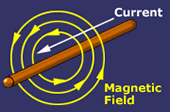Clarifying EMF and Cancer: Precautionary Occupational Strategies and Results of the NTP Cell Phone Studies
1:00 pm US Eastern Time
Slides & Resources
Speaker Slides
Dr. Bowman: Precautionary Strategies for Reducing Worker Exposures to ELF Magnetic Fields, a Possible Carcinogen
Dr. Wyde: NTP Toxicology and Carcinogenicity Studies of Cell Phone Radiofrequency Radiation
Resources
Spreadsheet of occupations from 2007 exposure database applicable to Dr. Bowman's presentation. This is sourced from the Job Exposure Matrix, which compiled 2317 MF measurements taken on or near workers by 10 studies in the United States, Sweden, New Zealand, Finland, and Italy. (Click on the PDF logo within the “Full Access” box and the paper will eventually open for free).
Possible health benefits from reducing occupational magnetic fields.JD Bowman, TK Ray, and RM Park. (2013) American Journal of Industrial Medicine, 56:791-805.
Evaluation of Precautionary Controls for Occupational ELF Magnetic Fields in Dutch Workplaces. Conference presentation at the American Industrial Hygiene (AIHce) 2014 Conference.
Development and Evaluation of Precautionary Control Measures for Occupational ELF Magnetic Fields. Poster of the Dutch study presented at the BioEMS. (2015)
Managing the Potential Hazards from Electromagnetic Interference (EMI) with Personal Medical Electronic Devices (PMED) in Workplaces. Presentation materials from 2016 American Occupational Health Conference (AOHC).
EMF (Electric and Magnetic Fields Associated with the Use of Electric Power): Questions and Answers. June 2002. NIEHS.
EMF (Electric and magnetic fields). The National Institute for Occupational Safety and Health (NIOSH).
Reflections on the INTERPHONE Study of Cell Phones and Brain Cancer. By Dr. Bowman. NIOSH Science Blog. 2010.
Report of partial findings from the NTP program carcinogenesis studies of cell phone radiofrequency radiation in Hsd: Sprague Dawley SD rats (whole body exposure). Wyde et al. 2016.
Cell Phone. National Toxicology Program. US Department of Health and Human Services. 2016.
This call was hosted by the CHE-EMF ScienceServ.

On this call, we had two distinguished speaker present on different perspectives of EMF exposures:
- Joseph D. Bowman, PhD, of the Engineering and Physical Hazards Branch at the National Institute for Occupational Safety (NIOSH) present Precautionary Strategies to Reduce Worker Exposures to Extremely Low Frequency (ELF) Magnetic Fields, a Possible Carcinogen
- Michael Wyde PhD, DABT, of the National Toxicology Program (NTP) presented Carcinogenesis Studies of Cell Phone Radiofrequency Radiation in Hsd: Sprague Dawley® SD rats (Whole Body Exposure): Report of Partial Findings
Featured Speakers
Dr. Joseph Bowman is a senior research chemist with NIOSH and is currently assessing occupational EMF exposures for the seven-country INTEROCC study of brain cancer. He is also developing NIOSH publications on strategies for managing workplace exposures to lower frequency EMF. Three of his 60 publications have received honorable mentions for NIOSH and CDC awards. Starting with a 1986 epidemiologic study of childhood leukemia risks from electric and magnetic fields in Los Angeles, he has focused on assessing exposure to EMF from power lines, cell phones, and other sources in workplaces and the environment. He received a PhD in physical chemistry from the University of Wisconsin in 1971 and was a Certified Industrial Hygienist from 1982 – 2011.
Dr. Michael Wyde is a toxicologist at the NTP and is overseeing the NTP cell phone studies. He also manages and participates in multidisciplinary teams of NIEHS/NTP scientists to develop research programs to address a broad array of toxicological study needs for chemicals selected for study by the National Toxicology Program. Wyde serves as the project leader for several chemicals including compounds that are used in consumer products, as food additives, as chemical intermediates, and environmental contaminants. He has a particular interest in chemical mixtures and herbal products, as well the application of dose-response modeling to NTP data for use in risk assessment, such as the determination of Benchmark Doses for carcinogenic and non-carcinogenic responses. Wyde received a Ph.D. in toxicology from the University of North Carolina at Chapel Hill.
This call was moderated by Antoinette (Toni) Stein, PhD. Opening remarks were made by Michael Lerner, Commonweal’s President. This call lasted for 60 minutes and was not recorded.


